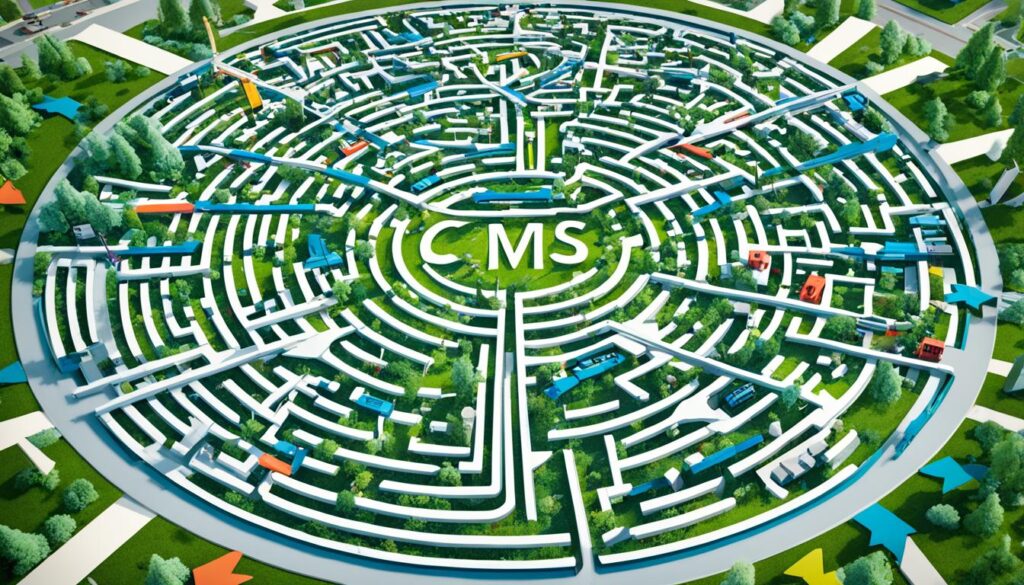
Duplicate content can have a significant impact on SEO performance and user experience. When multiple versions of the same content exist on a website, search engines may struggle to determine which version is the most relevant for users. This can result in lower search rankings and a diminished user experience.
One of the key factors in managing duplicate content is maintaining a clear and logical URL structure. By organizing URLs in a way that reflects the hierarchy and organization of your website, you can help search engines understand the relationships between different pages and their content.
In addition to URL structure, metadata plays an important role in distinguishing between duplicate content. Metadata, such as meta tags and header tags, provides search engines with valuable information about the content of a page. By ensuring that each page has unique and descriptive metadata, you can signal to search engines that the content is distinct and relevant.
Website architecture is another aspect to consider when addressing duplicate content. By designing a website with a logical and intuitive structure, users can easily navigate through the various pages, ensuring a positive user experience. An organized website architecture also helps search engines understand the relationships between different pages, reducing the risk of duplicate content issues.
To further address duplicate content concerns, implementing canonical tags and meta-robots directives can be beneficial. Canonical tags indicate the preferred version of a page when duplicate content exists, guiding search engines to the most relevant version. Meta-robots directives, on the other hand, instruct search engine crawlers on how to handle duplicate content, whether it should be indexed or ignored.
By carefully managing duplicate content during CMS migration and implementing best practices, businesses can optimize their SEO efforts and enhance user experience. The key is to prioritize maintaining a clear URL structure, unique metadata, and a logical website architecture, while utilizing canonical tags and meta-robots directives to provide clear signals to search engines.
Key Takeaways:
- Duplicate content impacts SEO performance and user experience.
- Organizing a clear URL structure helps search engines understand content hierarchy.
- Unique metadata distinguishes between different versions of duplicate content.
- Well-designed website architecture enhances user navigation and search engine understanding.
- Canonical tags and meta-robots directives provide clear signals to search engines.
Challenges and Solutions in CMS Migration
CMS migration can present a multitude of challenges that organizations must navigate to ensure a successful transition. From preserving the integrity of the URL structure to managing data migration and aligning business logic, each stage requires meticulous planning and execution. Let's explore some of the key challenges and the solutions to overcome them.
Preserving URL Structure for User Navigation and SEO Rankings
The URL structure is a critical element of any website, impacting both user experience and SEO rankings. During CMS migration, it is crucial to ensure that the URL structure remains intact. This allows users to navigate the website seamlessly while also preserving the existing SEO value associated with each URL.
Consistency in Meta and Header Tags for Content Presentation and Search Engine Visibility
Meta and header tags play a vital role in content presentation and search engine visibility. When migrating to a new CMS, organizations must ensure the consistent transfer of meta titles, descriptions, and header tags. This helps maintain the relevance and visibility of the content, ensuring a smooth transition for both users and search engines.
Modifications in Service Files to Prevent Functionality Disruptions and User Access Issues
Service files are an integral part of a website's functionality, impacting user access and overall performance. Carefully executing modifications in service files during CMS migration is crucial to prevent any disruptions to functionality. By thoroughly testing the modified service files and addressing potential issues, organizations can ensure a seamless user experience post-migration.
Prioritizing Search Rankings with a Comprehensive SEO Strategy
Migrating to a new CMS can have a significant impact on search rankings. To mitigate any negative effects on SEO, organizations must implement a comprehensive SEO strategy before, during, and after migration. This includes conducting a thorough SEO audit, optimizing content for relevant keywords, and monitoring rankings to identify and address any drops in search visibility.
Data Migration and Business Logic Alignment for Seamless Transition
Managing data migration is a crucial aspect of CMS migration. Organizations must ensure the smooth transfer of data, maintaining its integrity and structure. Additionally, aligning business logic and user-centric customizations during the migration process is essential to preserve the functionality of the website and provide a seamless transition for users.
Developing a Detailed Budget and Financial Plan for Stability
CMS migration can involve significant costs, including licensing fees, development, and customization expenses. To ensure financial stability throughout the migration process, organizations should develop a detailed budget and financial plan. This includes assessing costs, identifying potential risks, and allocating resources accordingly.

In summary, CMS migration entails various challenges that organizations need to address for a successful transition. From preserving the URL structure and ensuring consistency in meta and header tags to managing data migration and aligning business logic, thoughtful planning and execution are essential. By implementing solutions tailored to these challenges and prioritizing financial stability, organizations can navigate CMS migration effectively, optimizing both user experience and SEO performance.
Conclusion
The process of CMS migration is a complex undertaking that requires meticulous planning and precise execution. By following the steps outlined in this guide, organizations can ensure a seamless transition that not only enhances user experience but also maintains SEO performance.
Addressing key challenges such as preserving URL structure integrity, ensuring consistency in meta and header tags, and managing modifications in service files are essential for a successful CMS migration. Additionally, organizations must prioritize the preservation of search rankings, navigate shifts in data realities, and align business logic to minimize any disruptions.
Developing a comprehensive SEO strategy pre-migration, running a crawl to understand the scope of the website, and analyzing CMS features are crucial steps in making the migration as smooth as possible. By proactively addressing these challenges and following a strategic approach, organizations can navigate the complexities of CMS migration and achieve a seamless transition to a new CMS.
Throughout the process, it is important to prioritize data integrity and financial resilience. By ensuring the preservation of data during migration and developing a detailed budget and financial plan, organizations can mitigate risks and maintain stability during the transition.
FAQ
What is duplicate content and how does it impact SEO performance and user experience?
Duplicate content refers to identical or very similar content that appears on multiple web pages or websites. It can have a significant impact on SEO performance and user experience as it confuses search engines and makes it difficult to determine the most relevant version of the content. This can lead to issues with search rankings and diminish user satisfaction.
How can duplicate content be managed during CMS migration to preserve SEO?
To manage duplicate content during CMS migration, it is important to preserve the URL structure, metadata, and website architecture. Implementing canonical tags and meta-robots directives can also help prevent duplicate content issues and provide clear signals to search engines.
What are the challenges organizations face during CMS migration and how can they be addressed?
Challenges during CMS migration include preserving the integrity of the URL structure, consistency in meta and header tags, managing modifications in service files, preserving search rankings, navigating shifts in data realities, aligning business logic, and ensuring financial stability. These challenges can be addressed through meticulous planning, proper execution, comprehensive SEO strategy, and the development of a detailed budget.
How can organizations ensure a successful CMS migration?
To ensure a successful CMS migration, organizations should follow a strategic approach. This includes preserving URL structure integrity, ensuring consistency in meta and header tags, managing modifications in service files, preserving search rankings, navigating shifts in data realities, aligning business logic, developing a comprehensive SEO strategy, running a website crawl, and analyzing CMS features.
Why is it crucial to address duplicate content and SEO during CMS migration?
Addressing duplicate content and SEO during CMS migration is crucial as it helps optimize SEO efforts and enhance user experience. It ensures that search rankings are not negatively impacted and prevents any disruptions in content presentation and search engine visibility.
What is the importance of preserving URL structure integrity during CMS migration?
Preserving URL structure integrity during CMS migration is important to maintain user navigation and SEO rankings. It ensures that users can easily find and access the desired content, and search engines can accurately index and rank the website.











